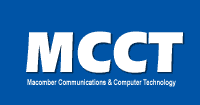|  resource capabilities provide real-time,
multi-party conferencing on Aculab's high performance CT cards. Prosody
offers a highly integrated conferencing service, lowering overall system
costs, reducing the development cycle and time to market. Coupled with
Aculab's unparalleled digital network access support and single, generic
API, Prosody enables fast, global deployment of conferencing solutions.
resource capabilities provide real-time,
multi-party conferencing on Aculab's high performance CT cards. Prosody
offers a highly integrated conferencing service, lowering overall system
costs, reducing the development cycle and time to market. Coupled with
Aculab's unparalleled digital network access support and single, generic
API, Prosody enables fast, global deployment of conferencing solutions.
Conferencing system features and capacities vary depending on the market
segments they target. Small to medium enterprises (SMEs) may look to
enhance the built-in conference call functions of their phone system,
while larger companies may require a stand-alone solution for intra-company
conferencing. Carriers and service bureaus may look to provide large
scale conference facilities as a business offering. Some example applications
include premium rate chat lines, intra-company worldwide training,
distance learning and corporate referendums or voting.
Prosody's conferencing allows developers to create flexible applications
to suit any of the above market segments. By eliminating the need for
dedicated, specialised conferencing hardware, Prosody presents a cost-effective
solution for delivering conferencing with powerful features and high
quality audio. Prosody is available in several configuration variants
on standards based PCI and CompactPCI (cPCI) cards.
Prosody's conferencing capabilities can provide a framework for various
conferencing scenarios as in the diagram below. A low-level (matrix)
and a high-level API are provided as conferencing extensions to Aculab's
generic API. The high-level API library provides a simple interface that
allows conferences to be constructed and manipulated using just a few
API calls. Using the matrix conferencing API it is possible to link multiple
DSP modules together to create very large conferences of up to 248 participants
on each card.
|
|

Two-party conferencing is typically used when building call logging
and recording applications based on Aculab's Passive monitor
card. Two-party conferencing mixes both sides of a conversation
into a single recording.
Prosody's conferencing has a comprehensive range of features, including
support of large conferences and complete control of speakers'
and listeners' participation within a conference.
Developers can create a large conference using a single DSP (maximum
64 participants per DSP) or several independent conferences using
one or more DSPs. In addition it is possible to create very large
conferences by connecting DSPs together using one or more cards.
There are three approaches to building larger conferences when
using Prosody. With these alternative methods the size of the conference
is determined in different ways and developers should choose the
method that is suited to their needs.
|
-
Volume control can be enabled in one of two ways; standard conferencing
with volume control of the output level, and conferencing with
individual volume control on a participant's input signal. The
latter is useful when implementing multiple conference loops, where
a speaker may be in several loops, in order to control individual
speaker volume.
-
Automatic gain control (AGC) can be enabled for conferences to
automatically adjust the volume and maintain it at an appropriate
level. If no speaker is detected the AGC function will suppress
a conference input channel in order to avoid passing through
the background noise.
-
DTMF clamping (tone clamping) on an input means that if the participant's
phone generates a tone, the DTMF signal will not interfere with
the conference. This is useful, to minimise annoyance to other
participants and prevent unwanted detection of echoed tones.
-
Echo cancellation / suppression can be used in a conference to
ensure an acceptable quality listening experience for all participants.
Prosody's echo cancellation options suppress echoes within a
conference, with echo cancellation coverage over 25ms of echo
path delay.
-
Active speaker detection can be used to track individual speakers
by noting when speech is on the line. The conference is analysed
to see which participants are speaking at the time and the API
allows an application to track this, with control over the sensitivity
of speaker levels. This is useful for transcription of minutes
and recording 'who made which statements'.
-
Recording the conversation between all participants is a common
requirement in conferencing applications. Recording allows carriers
or service bureaus to generate additional revenue through offering
extra services like supplying a recording of the call, or a full
transcription.
-
Prompts may be played to either individuals or all participants
to relay information for training or voting, for example.
-
Conference monitoring allows a moderator to hear and/or speak
to all or selected conference participants. This feature enables
the involvement of a conferencing 'coach' - a participant who
can speak to an individual without being heard by other users.
The targeted participant will still be able to hear and take
part in the conference. Similarly, the coach can remove a user's
ability to communicate with the rest of the group, but still
be able to listen.
|
|


